We had four days in Tokyo during our summertime side-trip, and since this would be Jessica’s first visit there and our itinerary was jam-packed, it was imperative that we get around the city efficiently from place to place.
Tokyo’s metropolitan rail system is one of the most confusing ones you’re likely to encounter around the globe. The city’s 15+ subway and suburban rail lines are operated by no less than three different companies, and the rules for whether you’re allowed to change from this train to that train on the same ticket can get very byzantine very fast.
It therefore behooves a first-time visitor to keep things as simple as possible when you’re trying to get around. Fortunately, the JR Yamanote line, a circular train service operated by JR East, runs through all of Tokyo’s major neighbourhoods and connects you to the vast majority of the city’s attractions and points of interest.

The line is depicted in light-green colour on the Tokyo rail map. Our hotel, The Prince Sakura Tower Tokyo, was located at Shinagawa station. From there, it was a quick trip on the westbound Yamanote trains to…
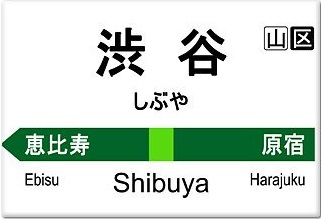
The Shibuya district is one of Tokyo’s key neighbourhoods, boasting one of its most recognizable sights: the Shibuya crossing. Tokyo’s answer to Times Square and Piccadilly Circus, the intersection’s many sidewalks each witness a gradual but alarmingly quick buildup of city folk, until every few minutes when the lights change, the floodgates open, and the asphalt becomes the site of a veritable swarm of people.
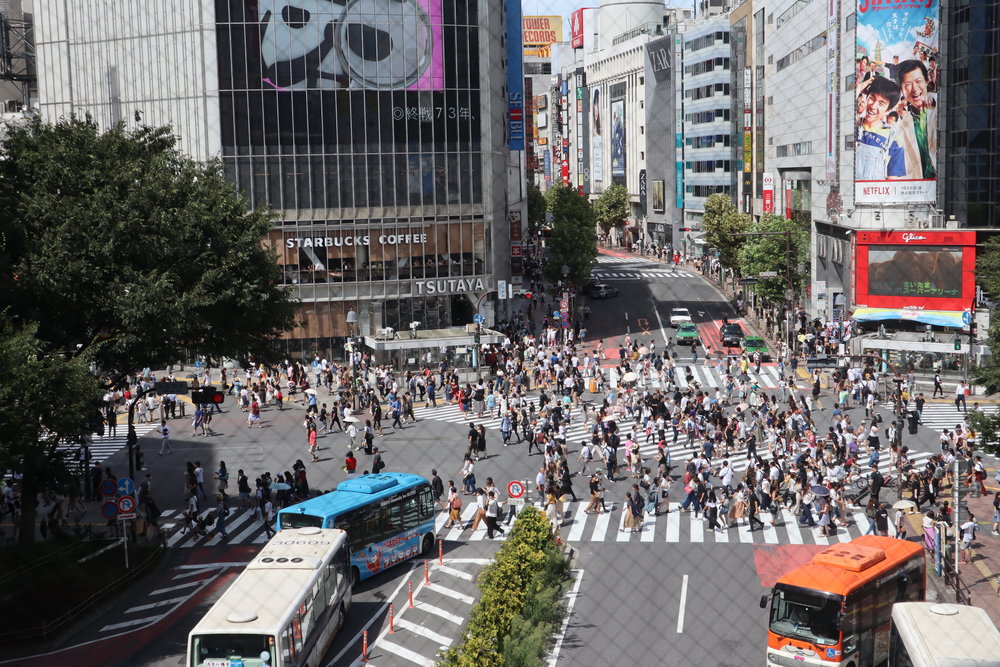
Shibuya crossing
It all makes for highly entertaining people-watching session from any of a number of vantage points around the Shibuya crossing. I’d recommend the second-floor Starbucks in the nearby Tsutaya building overlooking the whole thing, as well as the tenth-floor viewing platform in the Shibuya-109 department store on the opposite side of the street.

Shibuya crossing
If you’re more the type to get in among the action yourself, then by all means take a trip or two yourself into the chaotic crosswalk. Go ahead and pause in the middle of all the pedestrian traffic to grab a selfie. You won’t be the first nor the last to do so; in fact, you’ll probably have to maneuver around all the other tourists doing the same!
Shibuya is also known as one of Tokyo’s best shopping neighbourhoods, so you can head to Shibuya-109 or any number of other retail outlets to get your shopping fix. Tokyu Hands, the world’s eminent “hobby store” whose products range from spices to bicycles and everything in between, is a particularly fun time to wander through; even if you enter with no intention of buying anything, you very likely will.
If luxury shopping is more your thing, then the Omotesando shopping street will certainly be on your list; otherwise, it’s worth a stroll if only to admire the unique architecture along the street. Either way, it brings us to…
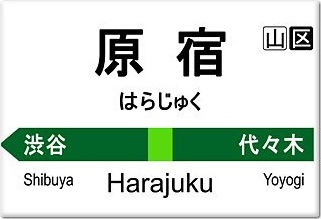
Home to both the eclectic Takeshita Street and the tranquil green space of the Meiji Shrine nestled within the urban sprawl, Harajuku is Tokyo in a microcosm.
While it’s certainly a bit over-the-top, Takeshita Street is an embodiment of Japan’s distinctive obsession with “random cute stuff”.
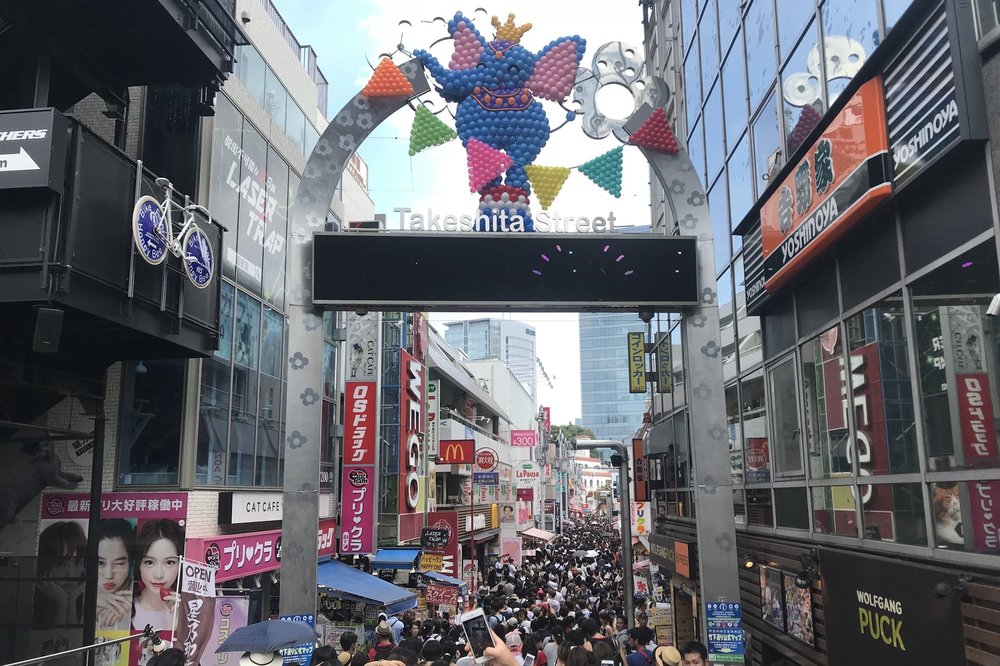
Takeshita Street
To be honest, I don’t quite understand it, but it was still pretty entertaining and eye-opening nonetheless. The street is lined with anime-themed stores, cheap knick-knack outlets, and casual eateries, so if you’re the type of person who loves to stroll among such establishments and browse at a leisurely pace (as Jessica does), then you’ll easily kill a few hours here.
If you’re feeling hungry, duck into one of the underground udon or curry rice places for a quick lunch. There’s no need to be too discerning; such is the nature of food in Japan that virtually any establishment, however dingy and unassuming, can hold a candle to being the best <insert Japanese food> you’ve ever had.
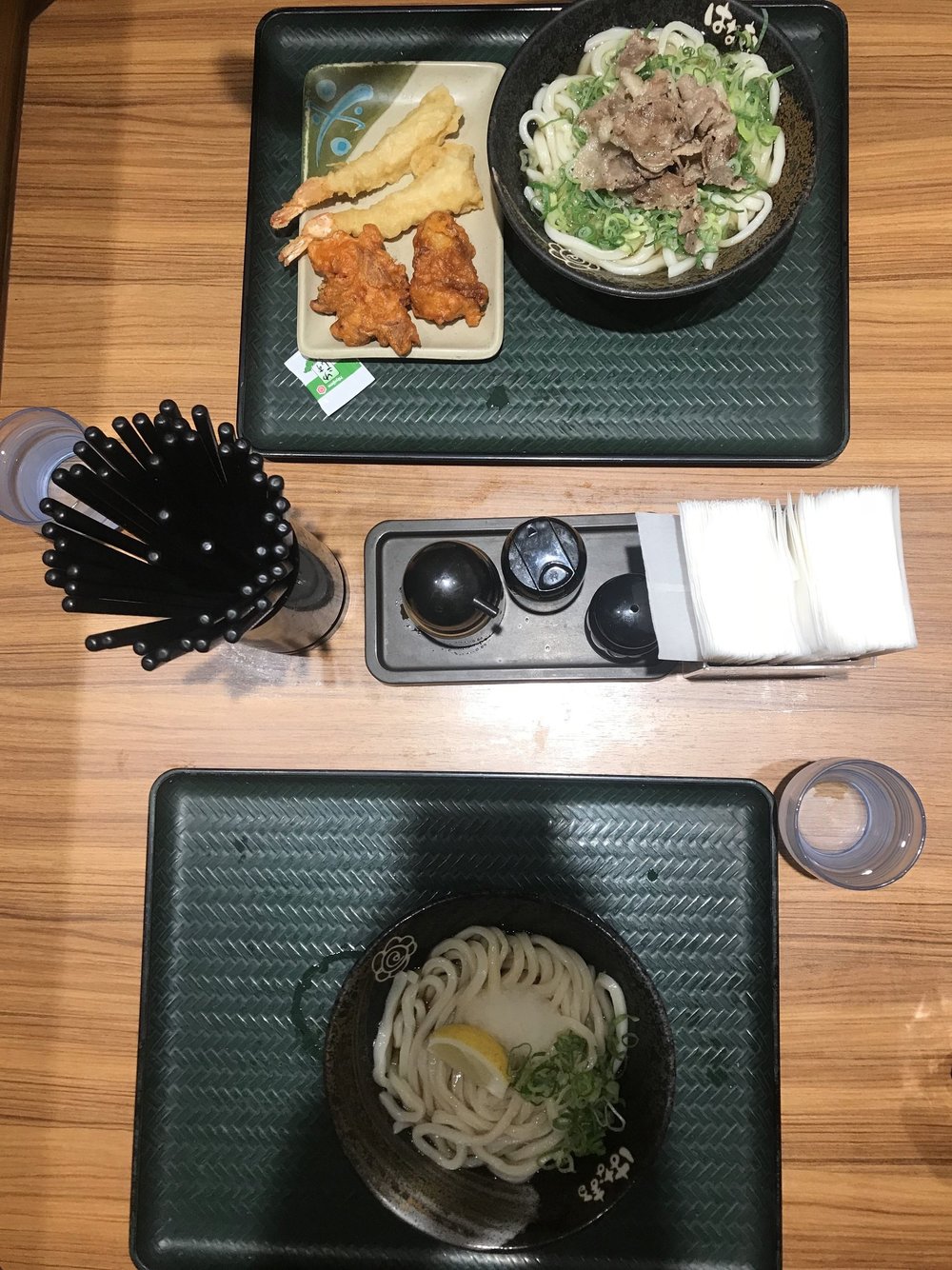

Travelling the full length of Takeshita Street spills you out not too far from your next stop: the Meiji Shrine. The Shinto shrine is surrounded by a dense wooded area, and a few wide tree-lined paths connect it to the rest of Harajuku. Look for the distinctive torii gate which marks your entrance.
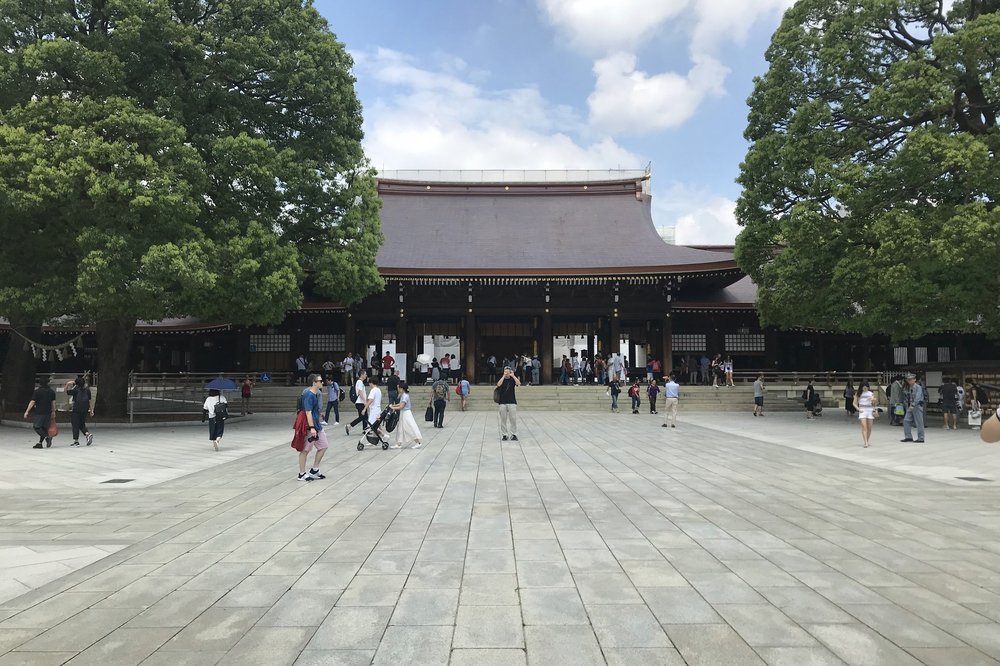
Meiji Shrine
We still found ourselves in a long queue to purchase the traditional wooden prayer panels that go up on the wall near the shrine. You can also purchase some incense and light it at the stake to give your prayers an extra boost. And after you’ve put in your prayers for good fortune, take a moment to participate in the traditional cleansing ritual on your way out.
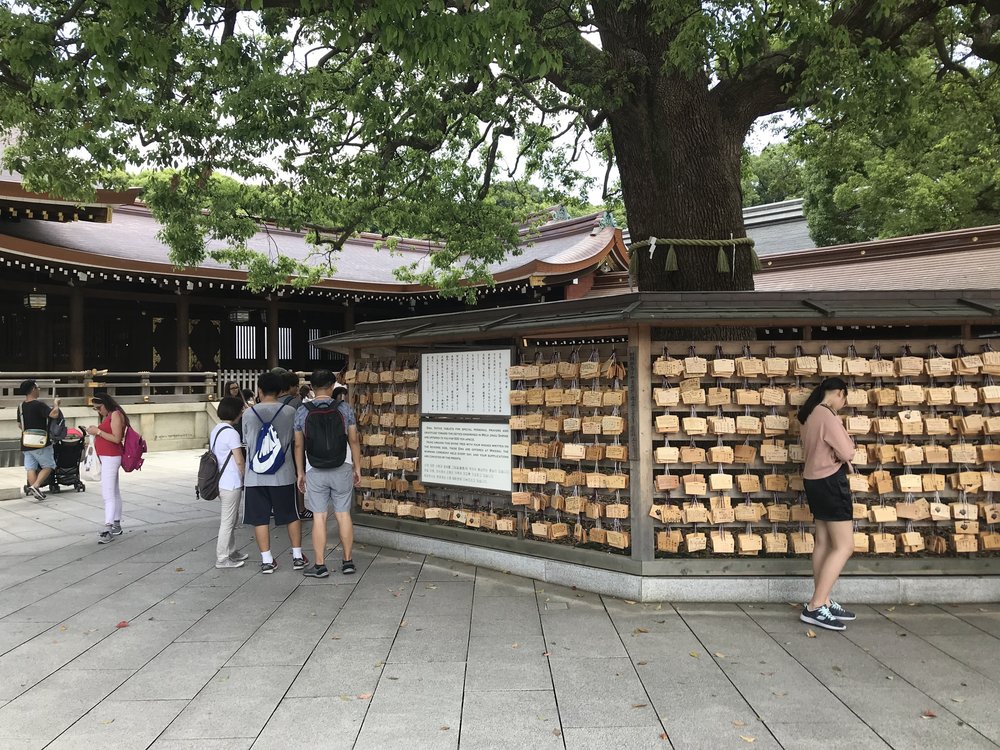

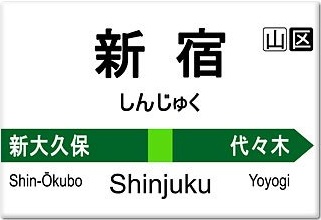
Shinjuku is Tokyo’s beating heart, and I’d consider it a must-visit for anyone no matter how much time you have in town. The Yamanote line platforms are part of the wider Shinjuku Railway Station, which is the busiest railway station in the world. That tells you all you need to know.
Whatever you’re in the mood for, Shinjuku has something to cater to it. Kicking your shopping spree up a gear? Shinjuku’s shopping street is less luxury-inclined than Shibuya’s but far more crowded, with endless department stores lined up one after the other.
Feeling like indulging in a guilt-free tourist trap? The Robot Restaurant might be the wackiest “dinner and a show” you’ll ever do. I’m a little ashamed to say I did pay ¥7,500 ($92) per person to watch two hours of humanoid “robots” putting on a show, operated by an enthusiastic dance troupe and set to the unrelenting score of pop music.
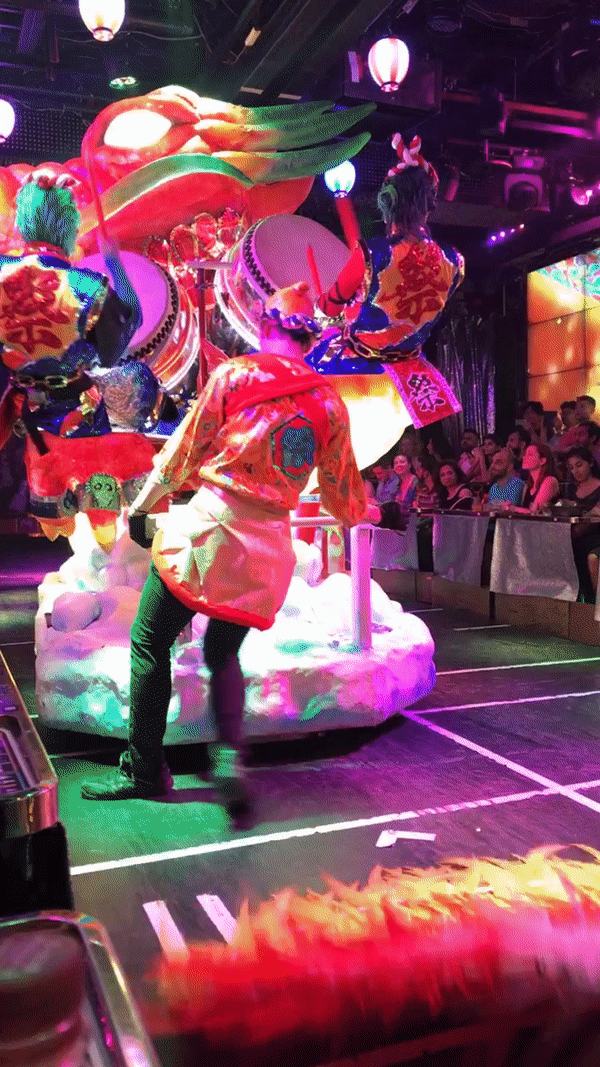
Nevertheless, my undisputed pick for how to spend your time in Shinjuku would be to visit Omoide Yokocho, a frenzied patchwork of izakaya alleys all packed within one city block, for some late-night food.
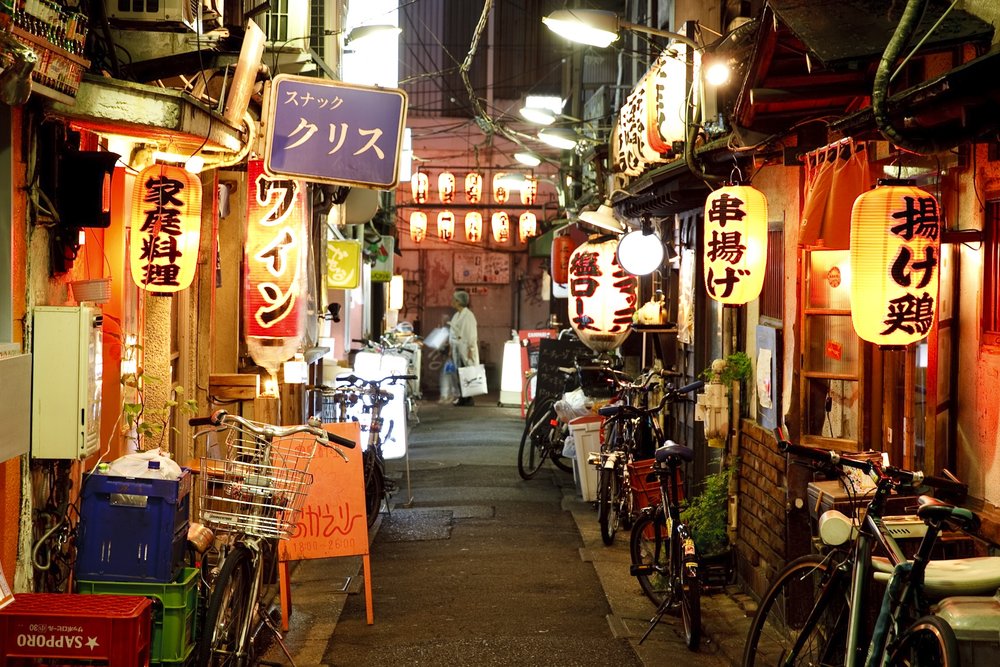
Omoide Yokocho
Take in the overwhelming scents, of both fresh barbecue and other less savoury substances (there’s a reason this place is known as “Piss Alley” among locals), before heading up to one of the second-floor eateries and settling in for a few rounds yakitori and cheap drinks.
Shinjuku’s the place I keep going back to when I’m in Tokyo. The area’s signature night scene – the brash neon lights of the shopping and entertainment venues almost completely blocking out the night sky – is not one you’ll forget anytime soon.

Shinjuku, Tokyo
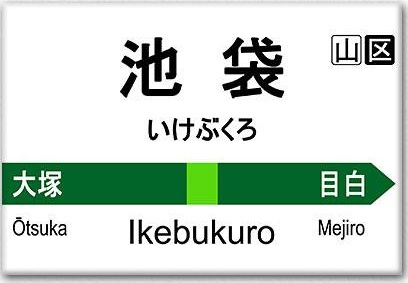
Like many other Tokyo neighbourhoods, Ikebukuro is busier than some entire countries; nevertheless, its clout in terms of commercial and entertainment activity – and therefore its appeal to tourists – arguably takes a backseat to the likes of Shinjuku and Shibuya.
The massive Seibu and Tobu department stores are two reasons to visit, but my particular recommendation takes the form of the Mutekiya ramen house, located mere steps away from Ikebukuro station.
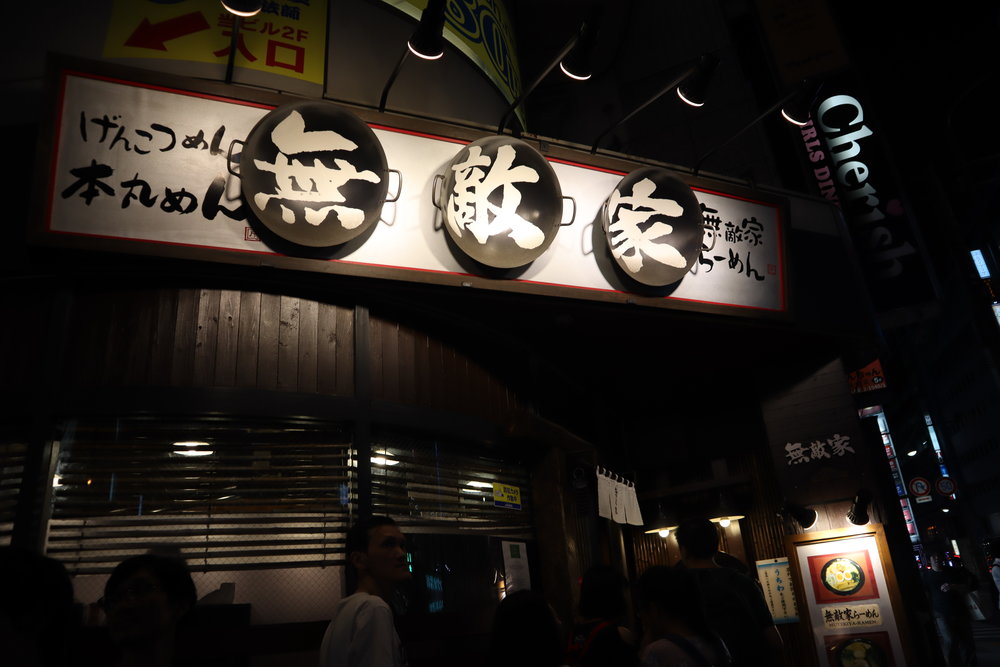
Mutekiya
Ask a dozen people about their favourite ramen joint in Tokyo and you’ll get a dozen different answers, but given your limited time in Tokyo and the sheer breadth of foods you must try, you can’t exactly afford to go shopping around. For delicious tonkotsu ramen, then, take my word for it: Mutekiya gets the job done. The restaurant’s name, which means “Unrivalled House”, speaks volumes, and I’ve returned to their doorstep time and time again.
Keep in mind that there’s almost always a queue to enter the cozy 20-seater restaurant, and you can wait up to an hour and a half before getting that divine first bite. But those of you who do brave the wait will be treated to some of the tastiest ramen you’ll find anywhere in town.
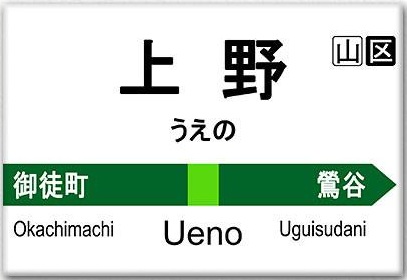
Ueno station provides access to the famous Senso-ji temple in the nearby Asakusa district, as well as the Tokyo Skytree observation tower. You might wish to catch some other trains from Ueno to reach those destinations, although I discovered that it was a leisurely 30-minute walk along relatively flat terrain if you have some time to spare.
First, the Senso-ji. This Buddhist temple is known for its distinctive red exterior and the imposing Kaminarimon (“Thunder Gate”) that guards it. Getting a picture under the gigantic paper lantern here is a touristic ritual.
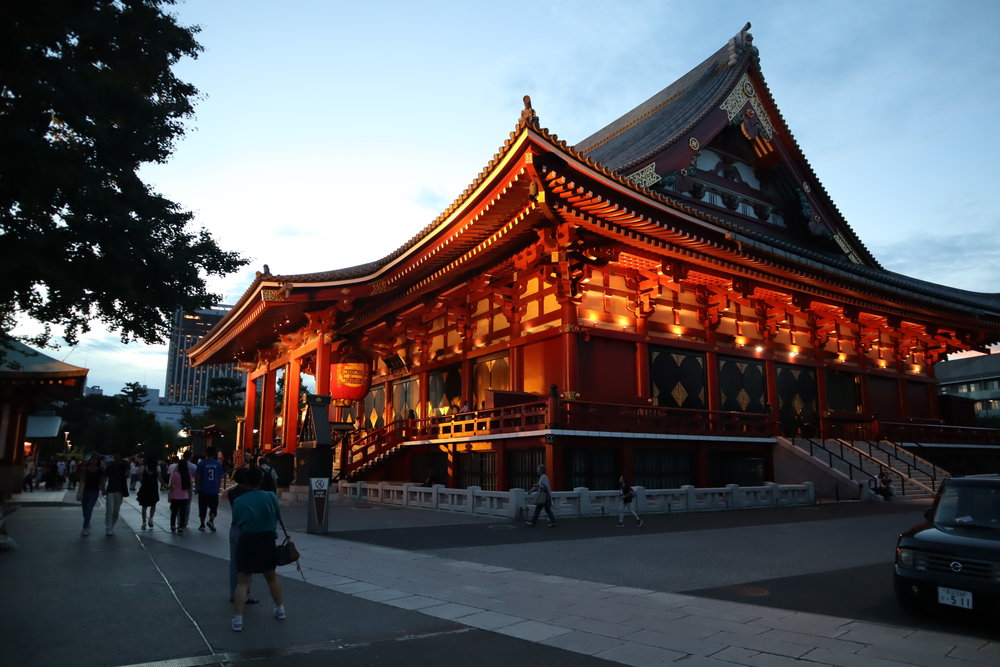
Senso-ji
Between the gate and the temple itself lies a long stretch of pop-up shops and food vendors, and the amount of snacks and knick-knacks on offer here can easily distract you from the main attraction!
After you’ve admired Tokyo’s oldest temple up-close, head east across the Sumida River towards the Tokyo Skytree, the world’s tallest tower and an excellent vantage point for unparalleled city views. (Speaking of which, the race to be the “world’s tallest X” just never ends, does it?)

Tokyo Skytree
Tokyo Skytree has got their price discrimination down to a pat: you can buy a “Fast Ticket”, which lets you skip the hour-long queue to go up, which consists of all the other people who didn’t buy a Fast Ticket. I’d highly recommend doing exactly that – the price difference is ¥1,000 ($12), and you get to save about 30 minutes to an hour of your time.

Views from the Tokyo Skytree
Once you’re up there, it’s best to avoid the overpriced cafe drinks and focus on absorbing the 360˚ views of the city. There’s not much else to do to be honest, but then again, why do people always “go up the tower” in cities around the world anyway?

You’d be excused for skipping this one, but Akihabara Electric Town presents a fascinating look into Japan’s otaku subculture – the widespread obsession with anime and manga. (I imagine Akihabara to be something of a Mecca for those of you who do happen to be into this stuff!)
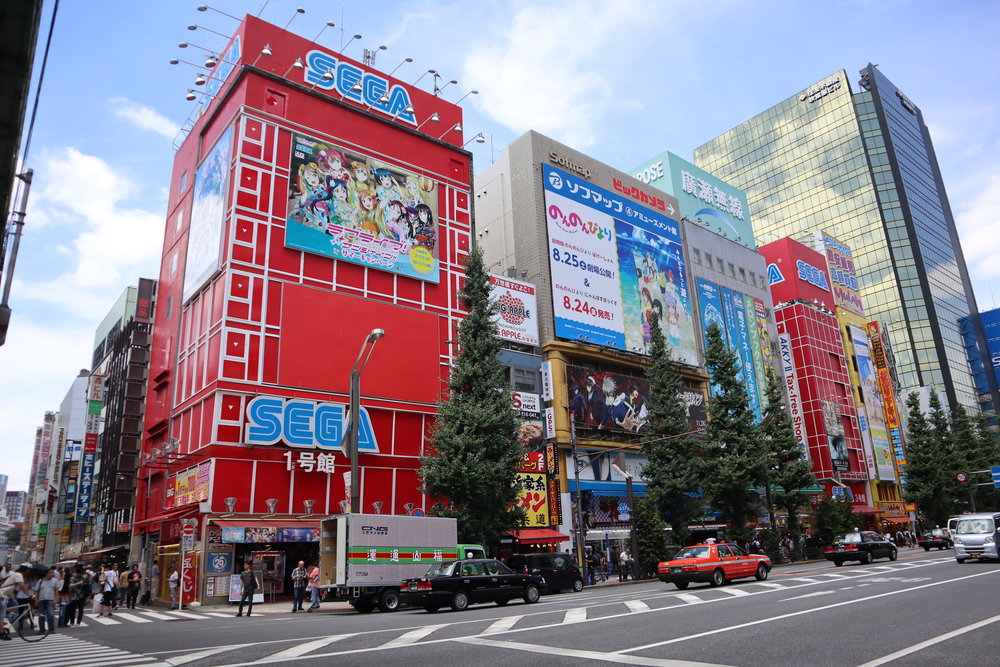
Akihabara Electric Town
There are entire buildings filled with books, DVDs, toys, and other paraphernalia inspired by anime and manga, and they’re quite an interesting place to walk through.
Jessica and I wandered through all eight floors of Mandarake, one of the largest such establishments, trying our best to understand what lies behind the nationwide passion for this art form.
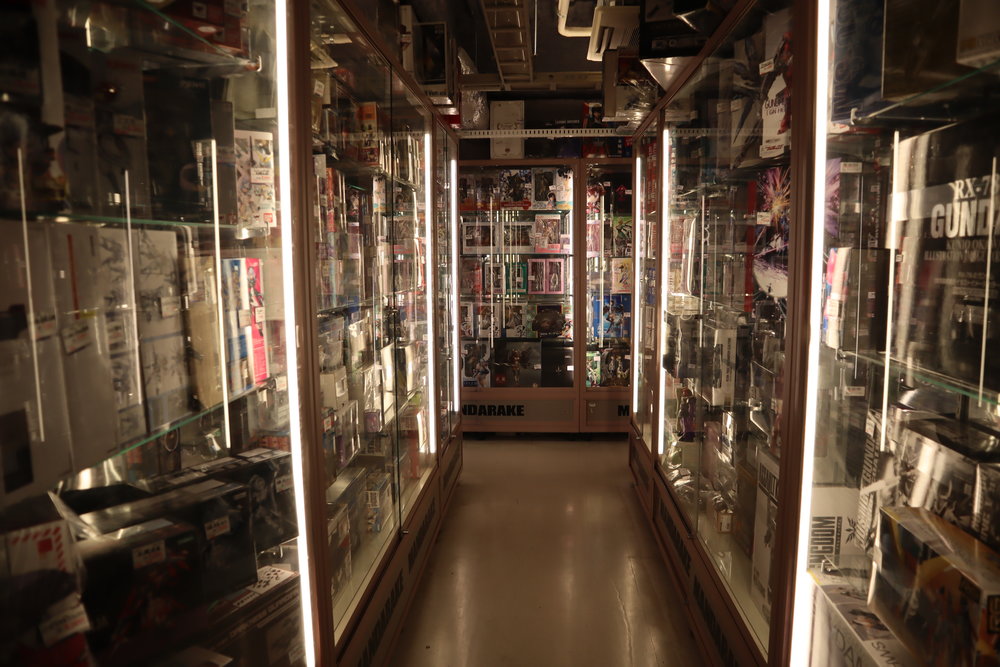
Mandarake
Our fellow patrons in the store ranged from other tourists who were expanding their horizons similar to ourselves, foreign anime enthusiasts who had made the pilgrimage from abroad, and Tokyo locals (almost 99.9% male) who, for lack of a better descriptor, looked like they came here on a daily basis. Visit Akihabara with a keen eye and you can certainly detect an element of some of Japan’s serious societal issues relating to isolation and withdrawal bubbling beneath the surface.
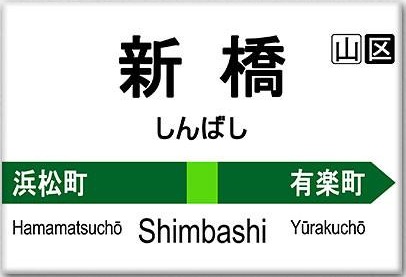
We’ve saved the best for last. Shimbashi station is but a stone’s throw from the world-renowned Tsukiji Fish Market, which until October 2018 was the largest fish and seafood market in the world.
Those of us who made it to Tsukiji before it closed will remember it in all its glory, and truthfully, I’m beyond thrilled to have visited it this summer one last time before it closed. The place was a veritable institution for seafood lovers around the world, and now that operations have moved over to the fancy new Toyosu Market building, it just isn’t going to be the same.

Tsukiji Outer Market
Nevertheless, Tsukiji Outer Market still exists, where you’ll still find restaurants lined up shoulder to shoulder, serving up delicious sushi and sashimi and continuing to attract thousands of seafood enthusiasts every day. The product comes directly from the new Toyosu market a few kilometres away, so you won’t find anywhere better in Tokyo to enjoy fresh fish.
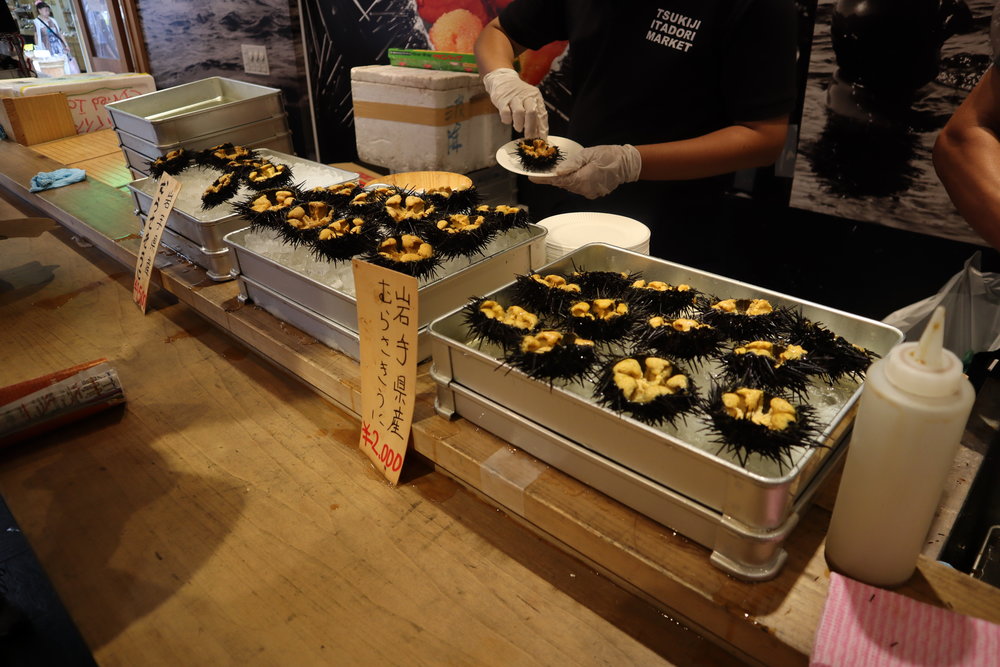
Fresh sea urchin at the Tsukiji Outer Market
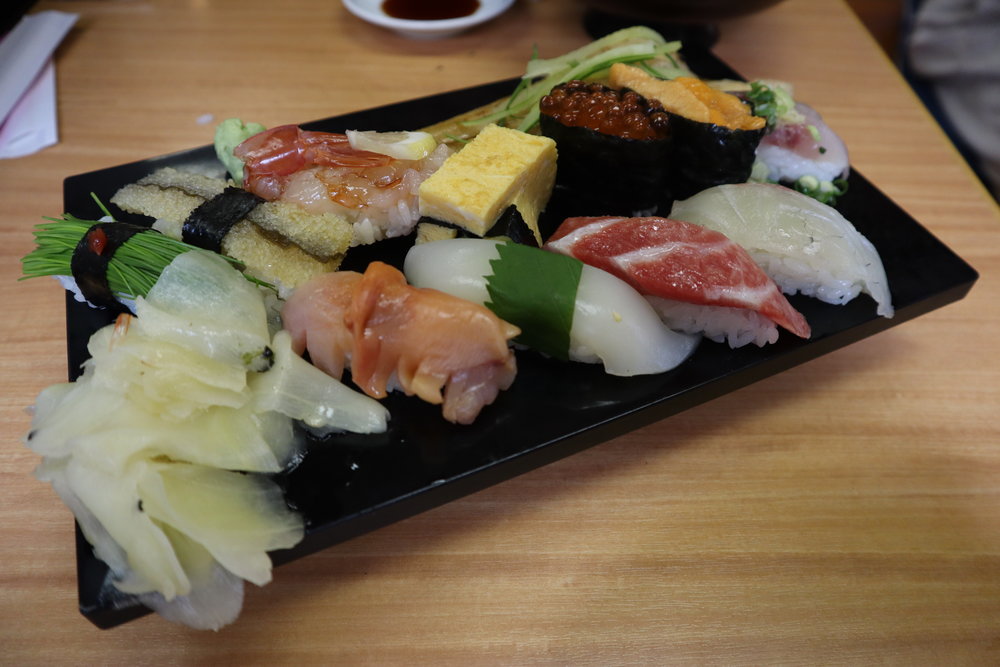
Sushi lunch at the Tsukiji Outer Market
If you do want to get a taste of the early-morning tuna auctions that Tsukiji was famous for, they’re still going on over at the new Toyosu Market. You’ll want to be up bright and early, as the auction of the city’s fattiest tuna fish typically takes place between 5:30am and 6:30am.
Head back to the old Tsukiji grounds afterwards for a sushi breakfast, and you’ll get to imagine how the processions had taken place among these narrow alleys every morning from 1935 to 2018.
For the truly discerning sushi lovers, the area surrounding Tsukiji, and the Ginza neighbourhood in particular, plays host to some of the city’s finest sushi restaurants. The budget-conscious sushi enthusiast would do well to follow The Sushi Geek’s list of 10 excellent Tokyo sushi spots for lunch under $50. Meanwhile, those for whom the decadence of fresh fish is worth every expense can find places where a single lunch can cost upwards of ¥35,000 ($435)!
Conclusion
Taking the JR Yamanote line around town is an easy way for first-time visitors to hit up all of Tokyo’s must-see attractions, from the vibrant commercial centres of Shibuya and Shinjuku, to the highlights of Old Tokyo in the Meiji Shrine and the Senso-ji temple, all the way to (arguably most importantly) the key establishments for sampling the city’s world-class gastronomy.
Japan’s capital is no doubt one of the world’s great cities, both in terms of its significance on the global stage and how incredible of a tourist experience it offers. I’ve never had a bad day in Tokyo, and I’m always looking forward to my next trip back.



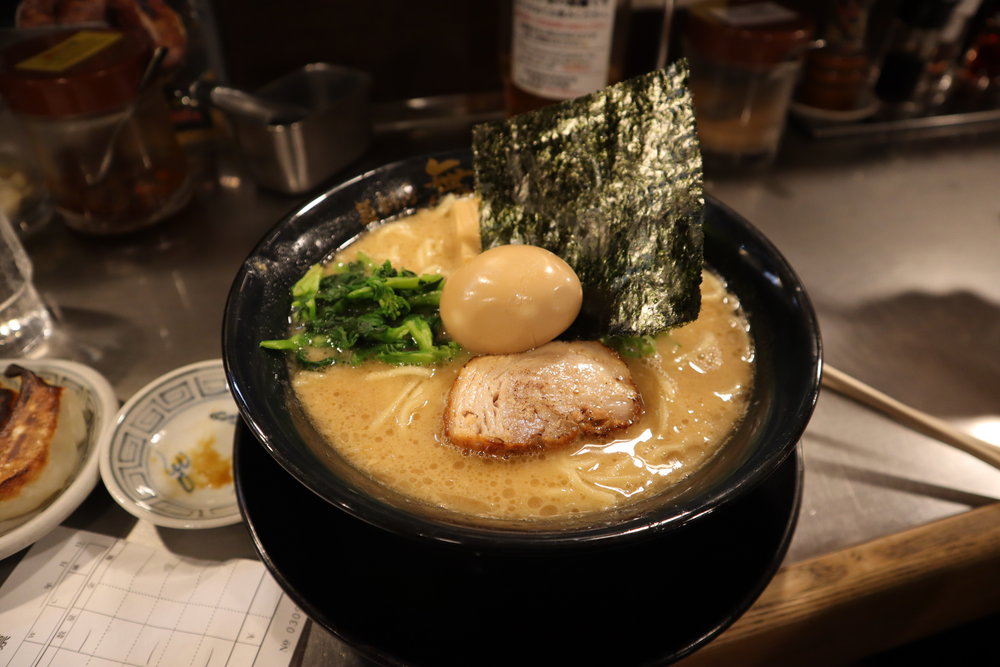















Perhaps you could write suggestions for a couple of days in Hong Kong?
Good suggestion. These articles typically follow my own travels around the world, so next time I’m in Hong Kong (which is hopefully sooner rather than later) you can definitely expect some travel tips!
山手線のまわりには、人が大勢すぎ。。。東京メトロで一番便利だと思う